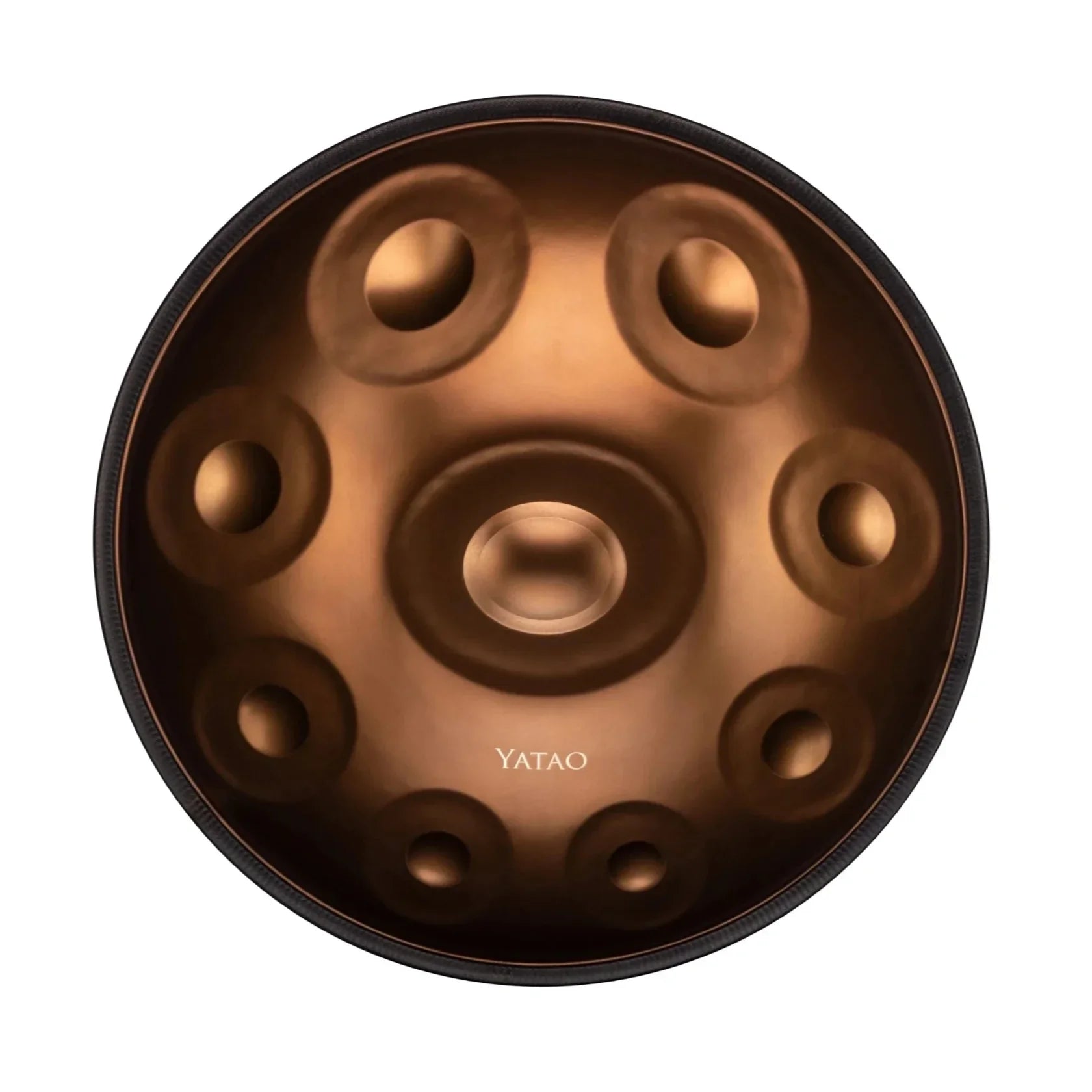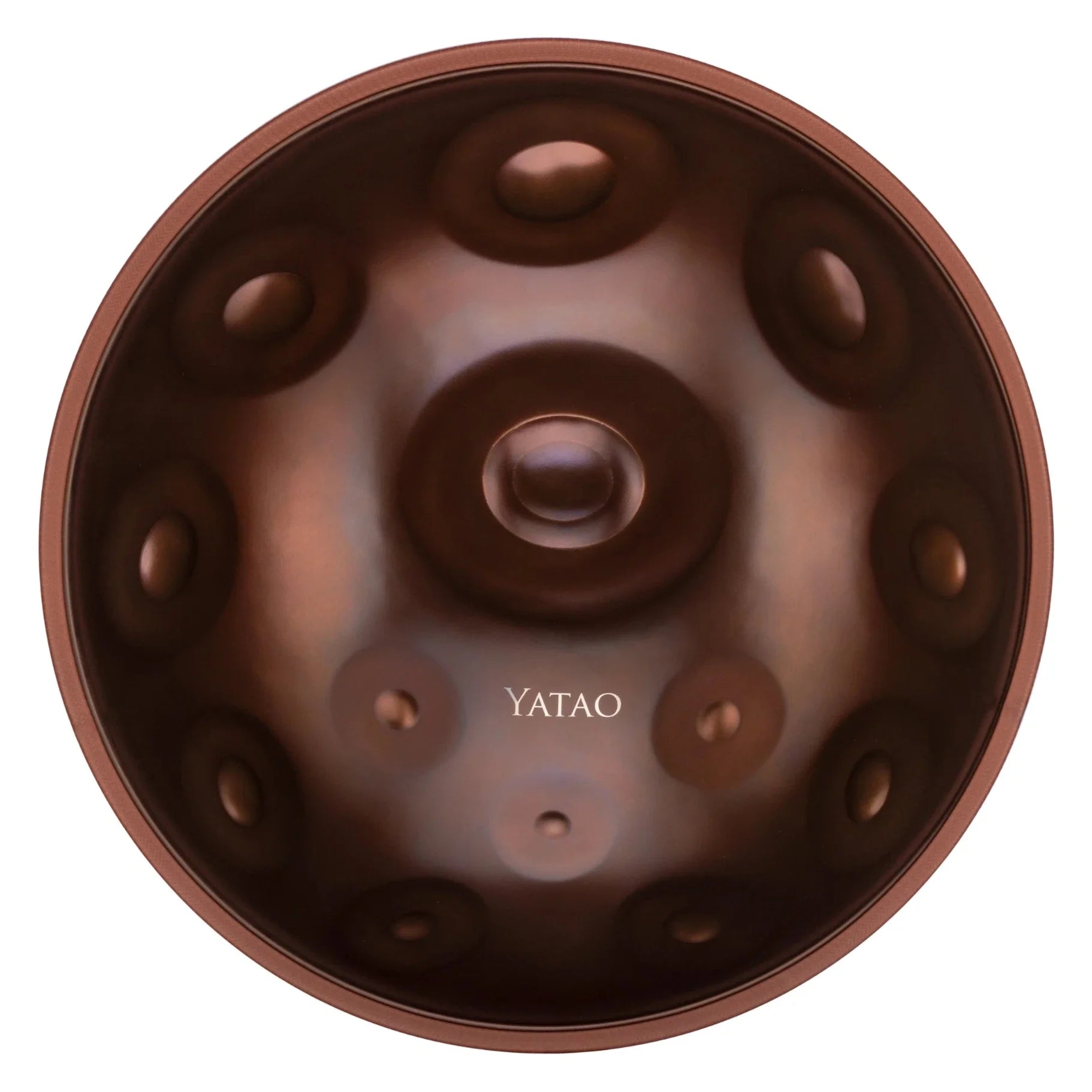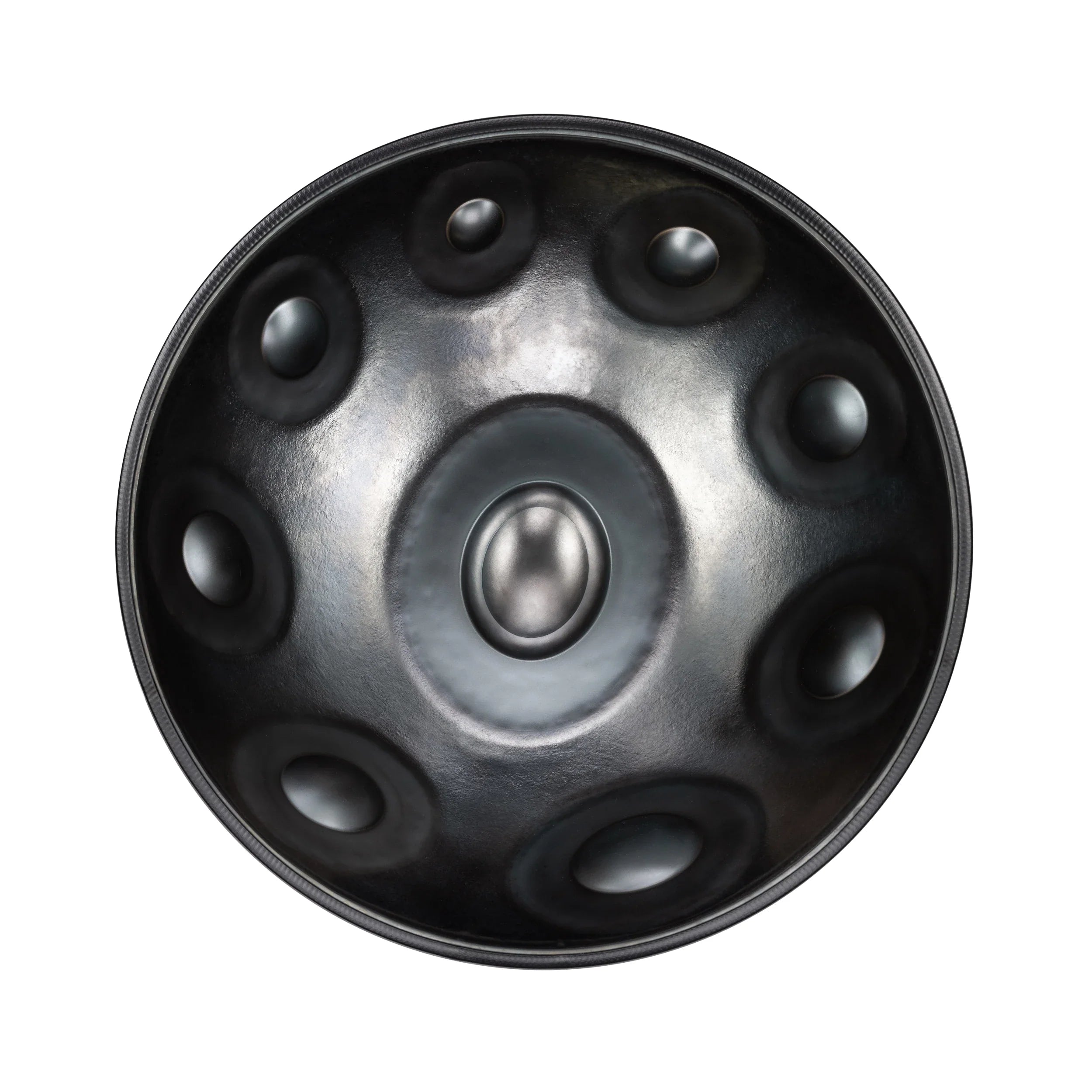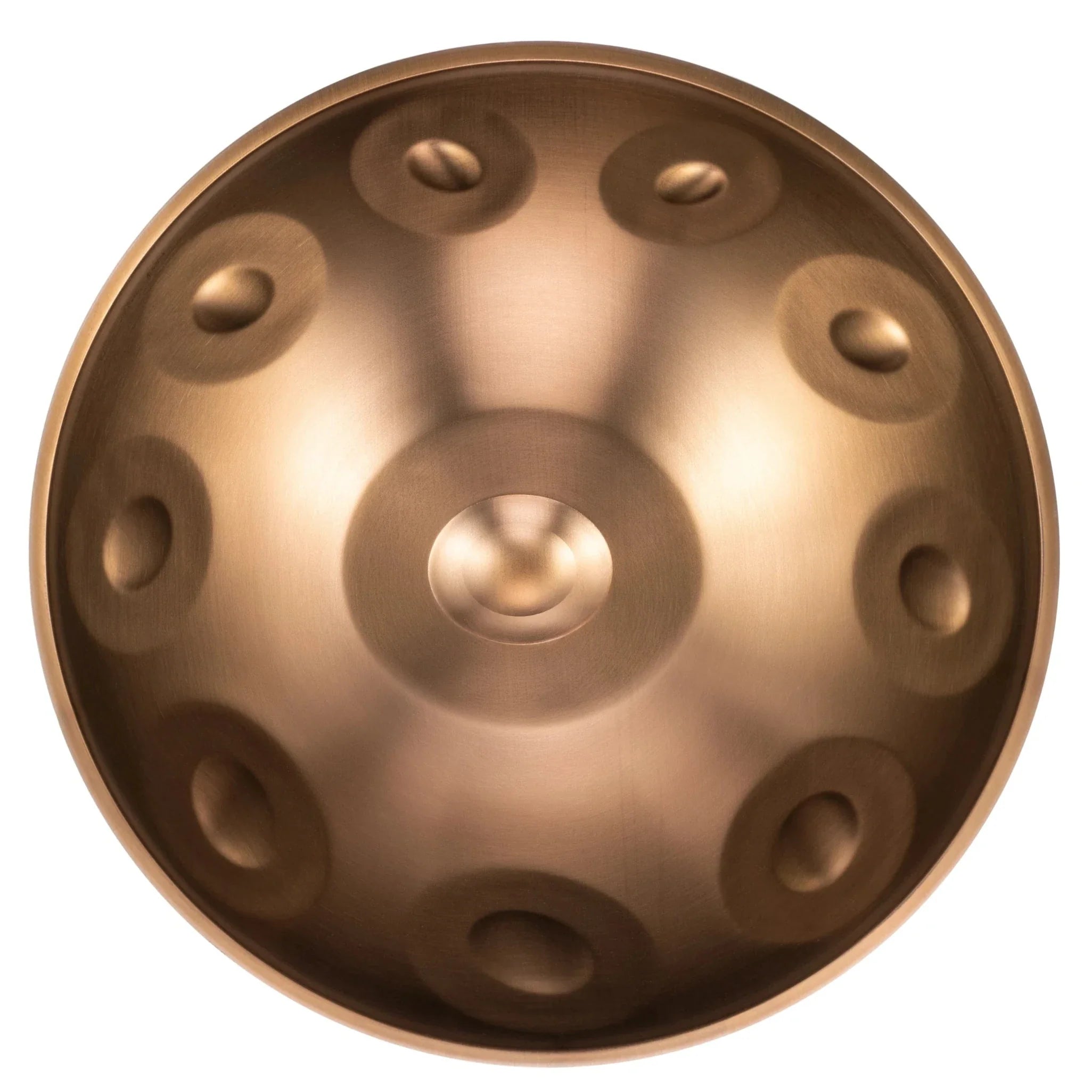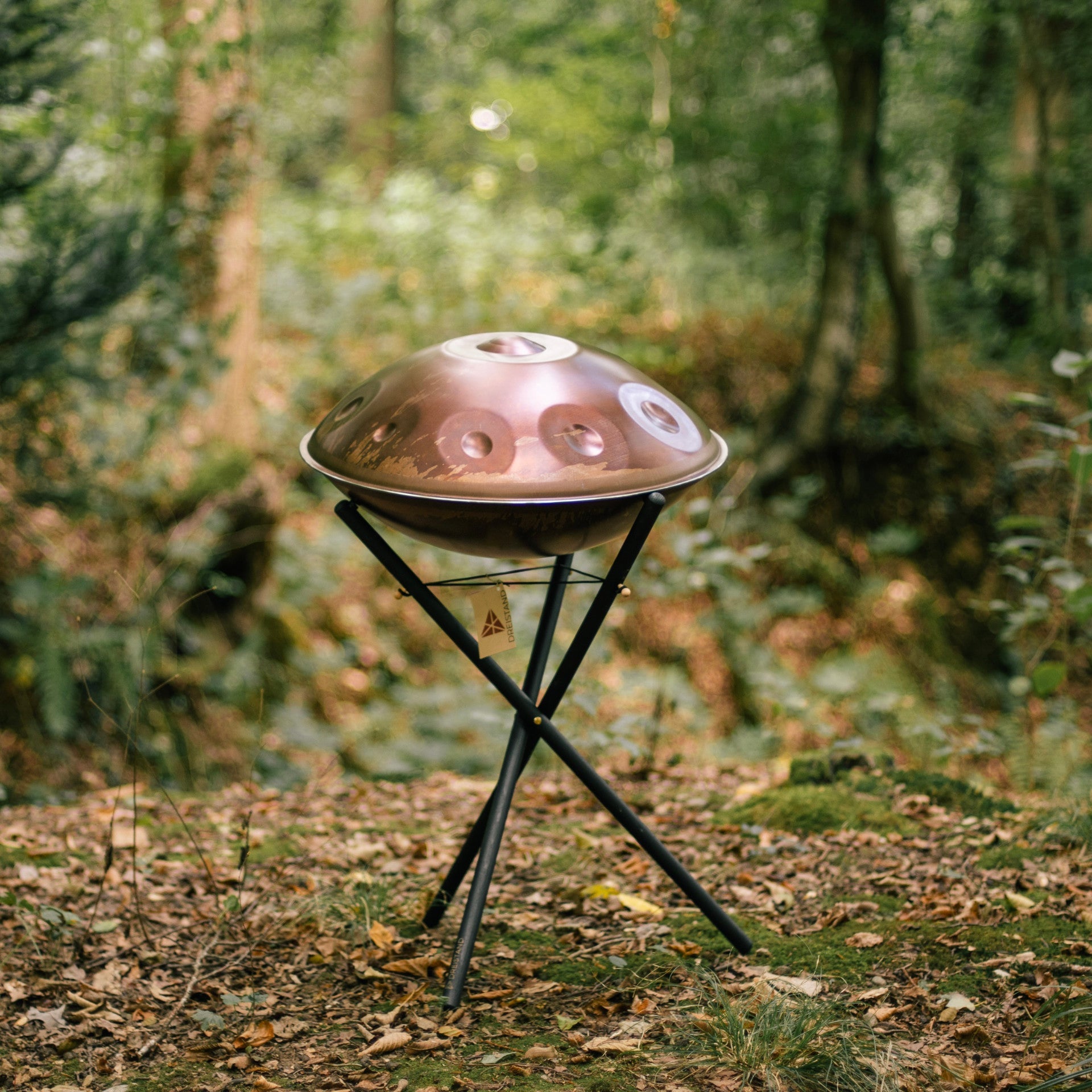What are the most important criteria when buying a handpan?

Your guide to buying the perfect handpan
Choosing a handpan is an exciting journey, but with so many options available, it can also be challenging. I’m Malte Marten, and I’d like to guide you through the most important factors to consider when buying a handpan. Whether you’re a beginner or an experienced handpan player, these criteria will help you find the instrument that resonates with your musical spirit.
1. Material: The foundation of your handpan’s sound
One of the most important factors to consider is the material your handpan is made of. There are three primary materials, each with its own sound and durability characteristics:
-
Stainless Steel: Known for its rust resistance and durability, stainless steel handpans offer a bright and clear tone with a long sustain. It’s perfect for players who appreciate long, resonant notes.
-
Nitrided Steel: This material produces a warmer, more intimate sound with a shorter sustain, ideal for percussive and earthy playing styles.
-
Ember Steel: My personal favorite, Ember Steel, blends the best qualities of both. It offers a rich, warm tone similar to nitrided steel, combined with the long sustain and durability of stainless steel.
Pro Tip: Stainless steel and Ember Steel instruments are the perfect choice for beginners, offering a crystal clear sound and easy touch.
2. Number of notes: More isn’t always better
The number of notes on a handpan determines its range and complexity. Most handpans feature between 9 and 10 notes, including the central ‘ding,’ which is ideal for beginners. However, more experienced players might want to explore handpans with additional notes for more musical versatility:
-
9-10 notes: Great for beginners, offering simplicity, yet enough melodic possibilities.
-
11-13 notes: Provides even more musical possibilities without overwhelming the player.
-
14+ notes: Best suited for intermediate players or beginners who want to take their new hobby seriously. Explore complex compositions and infinite improvisation sessions.
Beginners should start with 9 or 10 notes to focus on mastering the basics. As you advance, you can gradually explore more complex handpans with additional notes.
3. Choosing the scale: Setting the mood for your music
Choosing the right scale is a crucial step when selecting a handpan, as it shapes the character and mood of your music. Each scale has its own unique sound, atmosphere, and playing style. For beginners, we highly recommend the D Kurd handpan due to its versatility and accessibility. Below is an overview of some of the most common handpan scales, along with their characteristics and recommended uses.
1. Kurd / Annaziska
The Kurd scale is one of the most versatile minor scales. In D minor and E minor, it is called “Kurd,” while in C# minor (C-sharp), it is known as “Annaziska.” This scale offers exceptional harmonic diversity, allowing up to six full chords to be played even with just eight notes. Its range spans from dreamy to mystical to happy and hopeful, making it an excellent choice for expressing a wide spectrum of emotions.
Recommended for: Beginners, anyone starting their handpan journey and players looking to explore a wide variety of moods and expressions.
2. Celtic / Amara
The Celtic Minor scale, also known as “Amara,” is based on traditional Celtic music. The absence of the sixth note makes this scale particularly intuitive and harmonious. It is beginner-friendly and ideal for those looking for a smooth introduction to handpan playing.
Recommended for: Beginners and those seeking simple, harmonious, and accessible melodies.
3. Pygmy
The Pygmy scale is pentatonic, making it especially harmonious and inviting. Its dreamy, floating quality often carries a subtle touch of melancholy, allowing players to immerse themselves in reflective and emotive melodies.
Recommended for: Players looking for tranquil, introspective, and dreamy soundscapes.
4. Low Pygmy
An extended variation of the Pygmy scale, the Low Pygmy begins with the second note in the ring surrounding the Ding. This setup encourages a different playing approach, making it particularly suitable for melodic playing. Its depth and complexity make it more appropriate for advanced players.
Recommended for: Advanced players seeking a deep, melodic, and richly resonant sound.
5. Asha / Ashakiran
“Asha” translates to “hope,” while “Ashakiran” means “ray of hope.” This scale inspires light, cheerful, and melancholic melodies. The classic Asha features eight tones on the top shell, while the Ashakiranadds a ninth tone on the top and at least three tones on the bottom shell. These additional notes enrich the scale, creating a complete and versatile instrument.
Recommended for: Players looking for a hopeful, uplifting, and versatile scale.
7. Hijaz
The Hijaz scale is characterized by its distinctly oriental sound, created by the small second interval between the first and second notes. This scale is excellent for percussive playing and melodies with an Arabic or Spanish flair.
Recommended for: Players interested in exploring rhythmic, oriental, or Spanish-inspired music.
8. Harmonic Minor
The Harmonic Minor scale shares similarities with the Kurd scale but features a raised seventh note, giving it a slightly “spicy” flavor. It is well-suited for both melodic and percussive playing.
Recommended for: Players who enjoy a balance of rhythm and melody with a touch of exotic flair.
A key tip from our side:
Don’t overthink the scale too much as a beginner. Start with a versatile scale like D Kurd, which is truly a fantastic instrument for learning. Most tutorials and instructional videos are based on this scale, making it easier to follow along. Additionally, the D Kurd is one of the best-selling handpan scales, meaning you’ll likely find a playing partner with ease. And there’s nothing more beautiful than making music together and sharing the joy of the handpan.
4. Price: Balancing quality and affordability
Handpans can be a significant investment, and nowadays the price often doesn’t reflect the quality and craftsmanship of the instrument. It’s important to find a trustful source that offers price transparency, customer support and retuning services. However, here are a few price ranges to consider:
-
Beginner handpans: Generally more affordable, but make sure to buy from a reputable maker to ensure good sound quality and durability.
-
High-Quality handpans: These can range from $1,500 to $3,000 or more and often offer superior sound and craftsmanship, making them a long-term investment.
Set a budget, but don’t compromise too much on quality. A well-made handpan can last for years and provide an enriching musical experience. Keep in mind that you’re not just investing in an object but in your quality of life. The more beautiful the sound of your handpan, the more enjoyable and fulfilling your playing experience will be.
5. Playing level: Match the handpan to your skills
When choosing a handpan, it’s important to consider your skill level. Beginners should opt for handpans that are easy to play and offer fewer notes. More advanced players can challenge themselves with handpans that offer more complexity and tonal variety:
-
Beginners: Start with an easier-to-play handpan with fewer notes and simpler scales like a D Kurd.
-
Intermediate to advanced players: Explore handpans with more notes and complex scales to expand your musical expression.
Choose an instrument that aligns with your skill level to ensure a fulfilling playing experience.
Conclusion: Find your perfect handpan
In conclusion, when buying a handpan, consider the material, number of notes, scale, price, and your playing level. These factors will guide you to the right instrument that fits your needs, preferences, and skill level. And most importantly: don’t overthink it. The handpan journey is a long one, and your first handpan is unlikely to be your last.
If you have any questions or need personalized advice, feel free to reach out to our team or use the "Choose the Right Handpan" guide on our website. We’re here to help you on your journey into the universe of handpans. Sending all my love and best wishes!
Have questions?
We're here to help you make the right choice for your handpan journey.
Reach out to us at info@yataoshop.com for personalized guidance and support.
Find more handpan stories in our Blog
Much love, Malte & The Yatao Team.

